In the fast-paced digital world, a website’s performance can make or break a business. Imagine a potential customer clicking on your site, only to be greeted by a loading screen that feels like it’s auditioning for a slow-motion film. Frustrating, right? It’s time to put those pixelated nightmares to rest and ensure your website runs smoother than a buttered otter on a slip-and-slide.
Table of Contents
ToggleUnderstanding Website Performance
Website performance plays a vital role in enhancing user experience and retaining potential customers. A site that loads quickly encourages user engagement, while a slow-loading site can lead to high bounce rates.
Importance of Website Performance
Website performance significantly impacts both user experience and search engine rankings. Fast-loading sites provide an enjoyable browsing experience, which fosters customer satisfaction. Improved performance can increase conversion rates; website visitors are more likely to complete purchases on faster sites. Additionally, search engines prioritize fast websites in rankings, thus improving visibility.
Key Metrics for Measurement
Several metrics help evaluate website performance. Page load time measures how quickly a page appears, often targeting a benchmark of under 3 seconds. Time to First Byte (TTFB) indicates server responsiveness, revealing how quickly a server begins to send data. Bounce rate tracks the percentage of visitors who leave a site after viewing only one page. These metrics provide insights for improvements and determine overall user experience success.
Factors Influencing Website Performance
Website performance relies on several critical factors that directly impact user experience and engagement. Understanding these elements aids in implementing effective improvements.
Server Response Time
Server response time significantly affects website performance. It defines how quickly a server responds to a user’s request. A delay in this response negatively impacts page load time, which results in higher bounce rates. Reducing server response time can lead to faster website access for users. Strategies such as optimizing server configurations, utilizing Content Delivery Networks (CDNs), and selecting reliable hosting services contribute to this reduction. For instance, aiming for a server response time under 200 milliseconds enhances overall performance.
Front-End Optimization
Front-end optimization enhances website loading speeds by refining how content displays in a browser. This includes minimizing file sizes for images and scripts, reducing HTTP requests, and optimizing CSS and JavaScript files. Tools like image compression software can significantly decrease loading times. Leveraging browser caching also improves performance by storing previously accessed resources. Developers focusing on efficient coding practices often find that front-end optimization directly correlates with increased user satisfaction. Prioritizing these tactics ensures a smoother experience, ultimately boosting retention and conversion rates.
Tools for Analyzing Website Performance
Analyzing website performance requires the right tools to identify areas for improvement. Various tools specialize in performance testing and analytics.
Performance Testing Tools
Google PageSpeed Insights evaluates website performance and provides actionable recommendations. GTmetrix assesses loading speeds and offers a detailed report with metrics like total load time and page size. WebPageTest allows in-depth testing across multiple locations and devices. Each tool exposes specific performance bottlenecks. Using these tools helps developers understand optimization opportunities effectively.
Analytics and Monitoring Tools
Google Analytics tracks user interactions, offering insights into traffic patterns and engagement metrics. Hotjar collects heatmaps and session recordings, revealing how users navigate the site. New Relic provides real-time performance monitoring and application analytics. These tools enable website owners to make informed decisions based on user behavior. Leveraging analytics promotes continuous improvement of website performance.
Best Practices for Improving Website Performance
Improving website performance requires a strategic approach. Implementing best practices can lead to substantial enhancements in user experience and engagement.
Image Optimization Techniques
Optimizing images is crucial for faster loading times. Compressed images reduce file sizes without compromising quality. Utilize formats like WebP for optimal results, as they provide excellent quality at smaller sizes. Additionally, employing responsive images ensures that the correct image size is delivered based on the user’s device. Using lazy loading allows images to load only when users scroll to them, further enhancing performance. Regularly audit images to identify and rectify any that are unnecessarily large.
Minimizing HTTP Requests
Minimizing HTTP requests directly impacts loading times. Combining CSS and JavaScript files reduces the number of requests. Implementing a single stylesheet speeds up the rendering of web pages. Furthermore, using CSS sprites allows multiple images to be combined into a single file, reducing the load time. Prioritize the inclusion of critical resources in the HTML to enhance the rendering speed. Enabling browser caching also helps in storing frequently accessed files, thus lowering server requests on repeat visits. By streamlining HTTP requests, website performance improves significantly.
Conclusion
Website performance is a crucial factor that can make or break online success. By prioritizing speed and efficiency website owners can significantly enhance user satisfaction and drive conversions. Implementing best practices and utilizing performance testing tools helps identify bottlenecks and optimize loading times.
Investing in a well-optimized website not only improves search engine rankings but also fosters customer loyalty. As the digital landscape continues to evolve the importance of maintaining a fast and responsive website will only grow. Embracing these strategies ensures a competitive edge in attracting and retaining users in an increasingly crowded online marketplace.




